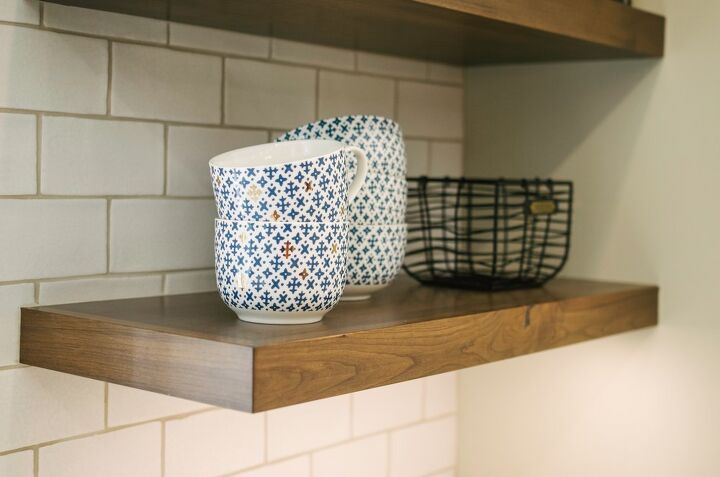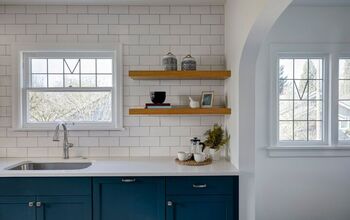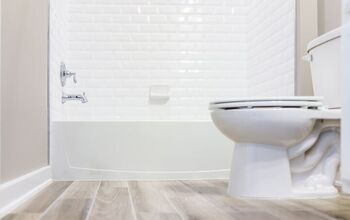What Is A Floating Wall? (Find Out Now!)

Running across a term like “floating wall” might have you scratching your head in wonder at what ultimately sounds like a magic trick. But, on the other hand, if you’re from Colorado, the term might sound familiar where such building practices are common. The continuously expanding soils in Colorado are why floating walls as used.
A floating wall is called such because the wall never touches the floor. Floating walls are used in basements where soil expansion is common. The visual achieved as the wall is nailed to the joists of the floor above, leaving a gap between the wall and the basement floor. As the soil expands the gap between the floor and the wall gives the floor enough room to move without impacting the wall.
Whether you’re looking to build a home or frame out an unfinished basement, knowledge of floating walls can come in quite handy. A comprehensive guide of floating walls will prove useful in that situation, such as the information presented below.
So, What Does A Floating Wall Entail?
As the name suggests, a floating wall is a wall that is not touching the ground or where the frame isn’t touching the floor. Floating walls are built inside basements and are made such that the wall doesn’t touch the foundation. Hung from the first-floor joists and anchored to a floor plate, there is a gap of at least 1.5 inches allowing the wall to float above the wall.
More specifically, floating walls are obtained by first installing base plates through the use of glue and concrete. Afterward, you frame up the walls to include a top and a bottom plate with the studs cut short so that there is a gap in between the base plate and the bottom plate of the wall. Next, the base plate and bottom plate are spiked through together, and then the top of the wall is nailed into the ceiling. Ultimately, this gives the impression of a wall that is floating in the air.
Why are Floating Walls Used?
Now that you know what a floating wall is, you might wonder why they get built in the first place. This type of construction allows walls to remain mobile against settling or movement of soil. Therefore, it does not affect the wall if the soil around the basement foundation shifts or expands with different weather patterns.
Floating walls also get placed into homes with wooden basements or when a crawlspace is below the basement. If regular walls were built that touch the ground or the floor of a wooden basement, there is a chance that soil expansion or movement of the wood on the floor walls will get strained. As the walls want to remain in place, and the ground beneath them doesn’t, the strain causes walls to crack or move out of place.
Why is Colorado Affected?
As you read about floating walls, you’ll likely run across the mention of the state of Colorado many times. This is because the soil in Colorado contains something that is called Bentonite. Bentonite is a clay-type substance that swells easily with moisture.
Soil under and around the home, which is infused with more Bentonite than what is considered normal, will swell as it freezes or pulls in moisture from its surroundings. Once that happens, the basement floor begins to rise, and it’s not unheard of for it to raise about an inch in height. This phenomenon is why Colorado structures will always have floating walls in their basements as a way to prevent damage to the home and the walls.
Are Floating Walls Load Bearing?
First, let’s discuss the significance of a load-bearing wall. A wall is considered low bearing if it supports the weight of the floor or the roof structure above. As their name suggests, load-bearing walls can hold up a significant amount of weight as opposed to walls considered partition walls. Partition walls only hold up their own weight and partition the home or structure into rooms.
Load-bearing walls usually run perpendicular, or at a 90-degree angle, to the joists, though this is not something you can see just by looking at your nicely finished walls. Whether you can see this or not, based on the definition of a load-bearing wall, a floating wall will never be load-bearing.
Floating walls don’t have support from the floor below them since that is where space is left, allowing them to “float” with the changes of the floor. Instead, they are nailed into the joists of the floor above in order to remain in place. Without the support of the floor, they cannot be load-bearing and should never be built with that intent. When further questions arise, it’s best to call a professional who will have all the information necessary during construction or home upgrades.
Can a Floating Wall Support a Door?
We determined floating walls are allowed to move up and down with the expansion of the soil, causing the basement floor to move. So, as you work to finish up the basement the way you see fit, it’s likely a question of hanging a door will come into play. The answer is simple, really; yes, a floating wall can support a door.
Installing a door on a floating wall is a little different than normal, but not by much. Larger spaces need to be left on either side of the door in the frame, which is secured with longer screws. As the wall moves, and so does the door, the screws will flex to provide the needed movement.
Door molding is also only attached to the door frame rather than the studs. This gives it enough room to move without straining the materials used to build the molding. It’s also prudent to nail sparingly so provide further room for any necessary movement. Should anything come loose with time and movement, there will always be another chance to fix it up down the road.
Can You Install Drywall onto a Floating Wall?
Another yes! You can add drywall to a floating wall, though it’s done a little differently, just as with the door. The top of the drywall is secured as expected, but it is not secured to the floor in any way. Instead of securing the drywall to any of the plates at the bottom, it is only secured to the floating portion of the wall. This is to ensure there is enough give between the floor and wall during soil expansion.
Of course, if drywall were to get mistakenly secured to the floor or the bottom plates, drywall is not a completely rigid material. To clarify, if the drywall were to rest against the floor and get pushed upward, it’d start to give and bend, likely causing cracks in the drywall and any paint or wallpaper.
For those unused to such constructions, drywall installation requires the proper contractor to handle it correctly. The price would prove significantly higher than a DIY project, but it would be worth it for the result, rather than having to do it again another time should something not go the way it should.
Can I Hang Things on Floating Walls?
Floating walls hold as much weight as any other wall in the house that has drywall. Proper care should always be taken when hanging anything, especially if it’s heavy and requires anchors. But, since the wall itself doesn’t actually float since it’s the floor that moves up and down, it has no impact on whether it’ll hold shelves or artwork.
How Important are Floating Walls?
Depending on circumstances, such as if the home is in Colorado, a floating wall is the only way to go for the basement. Allowing the floor to move up and down smoothly without impact the wall helps with the entire integrity of the home and the walls themselves. During soil expansion, the basement floor can move up as much as an inch, which would have a significant impact on rigidly installed walls.
Installed properly, a floating wall will have the same appeal and function as a regular wall, with the added benefit of allowing movement. Allowing a homeowner to still use the basement the way they normally would, floating walls are an important part of maintaining home integrity.
Related Articles

We are a team of passionate homeowners, home improvement pros, and DIY enthusiasts who enjoy sharing home improvement, housekeeping, decorating, and more with other homeowners! Whether you're looking for a step-by-step guide on fixing an appliance or the cost of installing a fence, we've here to help.
More by Upgraded Home Team



























